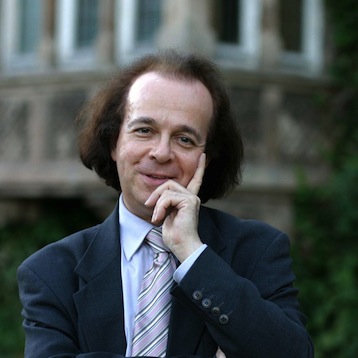Katsaris brings a poet’s artistry to Chopin and Schubert

Cyprien Katsaris performed a recital of Chopin, Schubert and Liszt Monday night at Gusman Concert Hall.
Cyprien Katsaris presented a generous program of works by Schubert, Chopin and Liszt for Friends of Chamber Music Monday night at the University of Miami’s Gusman Concert Hall.
Impressive in his recital last season, Katsaris again proved a pianist of the most refined artistry. His technique easily encompasses the most complex keyboard pyrotechnics; yet Katsaris really excels in moments of softness and repose. His limpid, pearly tone and subtly calibrated sense of line and pulse turn the nominally percussive keyboard into a poetic, singing instrument. In the manner of pianists from an earlier era, Katsaris brings a highly individual interpretive sensibility to every work he plays.
An exquisite performance of Schubert’s Allegretto, D.915 prefaced Katsaris’ fluid, volatile shaping of the Sonata in B-flat, D.960. The lyrical nobility of the opening theme presaged a performance of bold contrasts and sweeping dramatic power. For Katsaris, the pauses and silent moments are as important as Schubert’s endless font of melody. Despite sudden variations of tempo, Katsaris sustained tension, the dramatic climax strongly felt. Katsaris’ potent contrasts of light and shadow framed the movement’s arc, the return of the opening melody seemingly organic.
The pianist brought grave beauty to the Andante sostenuto, enhanced by wonderfully varied tonal coloration. An almost Mozartean lightness pervaded the Scherzo, liltingly shaped and articulated with precision. Katsaris’ vigorous traversal of the final Allegro resounded with dance-like verve and bold dramatic intensity. A lightning-paced coda climaxed an inspired performance of intelligence and passion.
Katsaris’ sense of improvisatory adventure and rhythmic urgency make him a born Chopin player. He opened the second half with an engaging Allegretto and Mazur, Chopin’s harmonization of the popular Polish tunes of his day. Katsaris assayed the Mazurka in C, Op.24, No.2 with ruminative elegance, the music’s sad undercurrent never far below the surface. Slight hesitations enhanced the beauty of Katsaris’ gleaming keyboard line.
The oft played Polonaise Miitaire in A, Op.40, No.1 was devoid of bombast, Katsaris’ flowing musicality never succumbing to the episodic nature of less idiomatically attuned performances.
A poetic and serene Nocturne in E-flat, Op.9, No.2 seemed almost improvisatory. An unusually fast version of the Valse in C-sharp minor, Op.64, No.2 also conveyed the subtext of nostalgic sadness. Wiosna (Spring), Op.74, No.2, a lovely vignette, was followed by Chant Polonais de Chopin No. 2, Liszt’s large-scale transcription of the same melodic material. Katsaris’ varied color palette and detailed shading turned this rarity into freshly minted gold.
For a thunderous finale, Katsaris offered his own transcription of Liszt’s Piano Concerto No.2. This florid showpiece proved one of the rare times a solo arrangement of a piano-orchestral work actually improves on the original. Bereft of orchestral bombast, Katsaris ornamented the instrumental ensemble passages with filigree, both elegant and flashy. A pupil of Liszt specialist Gyorgy Cziffra, Katsaris captures the larger-than-life bravura of Liszt’s keyboard gymnastics with idiomatic fluency. It was in the contrasting quiet moments when Katsaris’ performance soared into exceptional realms. He shaped Liszt’s brief lyrical strophes with unusual beauty and grace. In the finger breaking coda, Katsaris pulled out all the stops with playing of volcanic excitement.
After repeated curtain calls, Katsaris offered a unique encore — the Prelude in E minor from the first book of J.S. Bach’s Well Tempered Clavier but in an earlier version in B minor, transcribed for modern piano by Alexander Siloti. To this uniquely austere and spiritual music, Katsaris brought beauty of tone, depth of emotion and the soul of a poet.
Posted in Performances
One Response to “Katsaris brings a poet’s artistry to Chopin and Schubert”
Leave a Comment
Tue Feb 14, 2012
at 1:24 pm
1 Comment
Posted Feb 14, 2012 at 2:06 pm by Francis Romano
I would like to correct a statement in this review.
Mr Katsaris was not the pupil of Gyorgy Cziffra, they were quite close and Katsaris won the first International Cziffra Competition in 1974.
Katsaris studied with Monique dela Bruchollerie and Aline Van Barentzen at the Paris Conservatory.